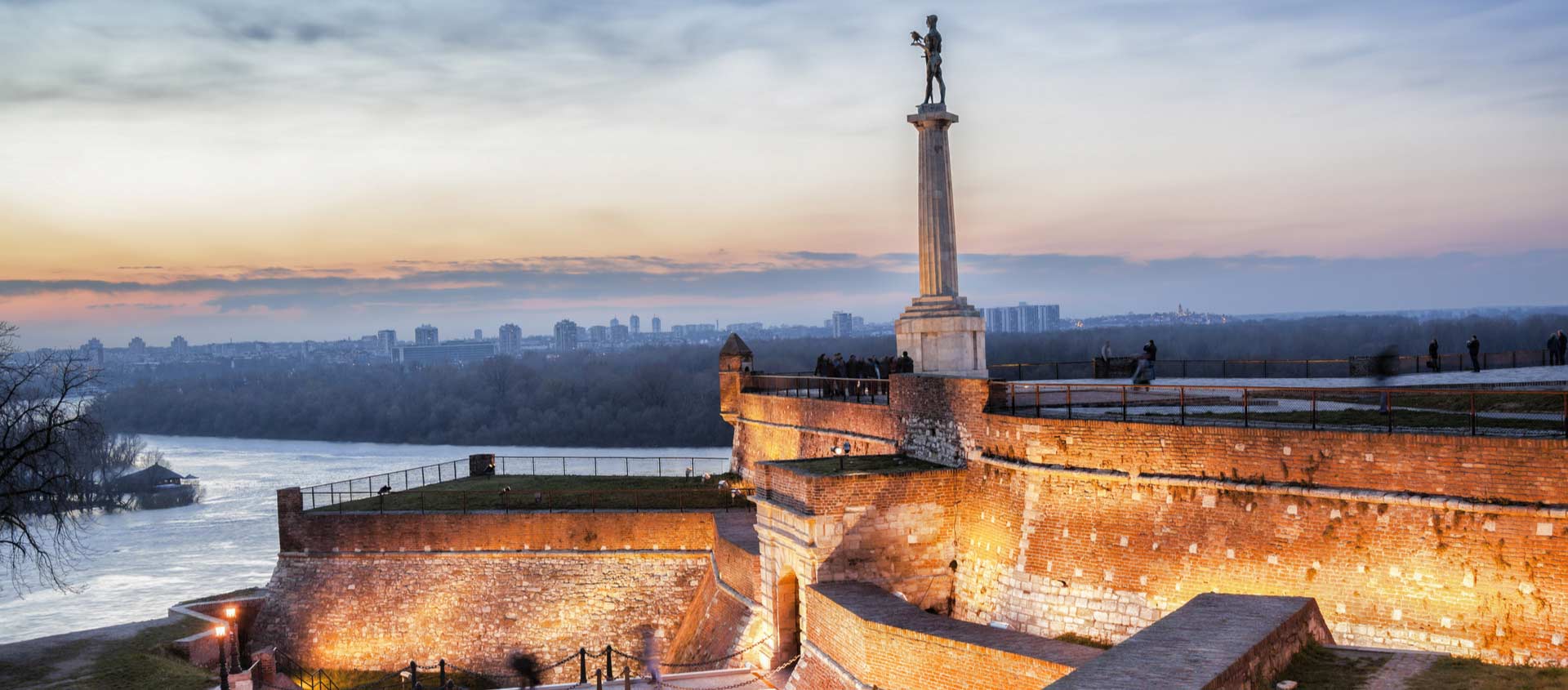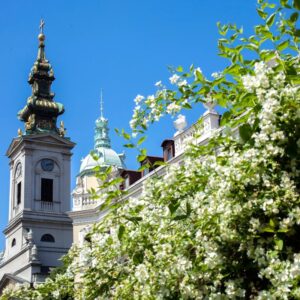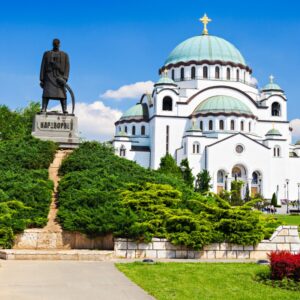
Belgrade city, Serbia
Belgrade offers a lot of attractions and experiences to its visitors. Surrender to the exuberant charms of the capital city and immerse yourself into its fascinating atmosphere. Tours of Belgrade are carefully designed and launched for guests by the Far &Away Travel agency.
Belgrade is a City of Festivals and cultural happenings, but it is not famous only for these reasons. Its nightlife, national cuisine with big dishes and well known ``Rakija`` made of different fruits grown in our regions are also very well known. ``Burek``, ``Sarma``, ``Cevapi``, ``Ajvar`` and ``Kobasica`` are words which have entered all languages of the world.
Join this tour to have an overview of the best known landmarks of Belgrade and an introduction to the history of two Serbian royal dynasties which ruled Serbia from the 19th till the mid-20th century and liberated Serbia from the Ottoman reign.
Belgrade and its surroundings date back from the Celtic period, between the 4th and 3rd century B.C. A settlement named Singidunum was set up and subsequently occupied by the Romans at the beginning of the 1st century B.C. As a crossroad between the East and West and as an important strategic point, through its history Belgrade suffered battles and wars and has been destroyed and re-built over 40 times. After the Celts and Romans, many rulers came one after another: Byzantines, Hungarians, Bulgarians, Turks and Austrians, each of them leaving their mark. Old Roman and medieval buildings almost disappeared and long-lasting Ottomans rule left barely some. Belgrade lies at the confluence of the Sava and Danube Rivers.
Kalemegdan Fortress dates back from the Neolithic period. Its urban character started in the early A.C. when the Romans built their Castrum. The Fortress stands high above the Sava and Danube Rivers with a spacious plateau surrounding the Fortress divided to Gornji and Donji Grad (Upper and Lower Fortress). Key moments in its development were during ByzantiumTsar Justinian (6th century) and Serbian ruler Stefan Lazarevic (14th century), as well as at the end of the 17th century when the Fortress was reconstructed according to designs drawn by Italian engineer Andre Kornaro.
Today the remnants of Fortress are a part of the vast Kalemegdan Park and a real gem, symbol of the City.
Saborna crkva (The Cathedral)
The Cathedral of St.Michael the Archangel was built from 1837 to 1840 at the place of the old church built in 1728. It is the central congregational church of the City where the relics of Serbian saints, King Uros and Despot Stefan Stiljanović, princes Milos and Mihailo Obrenovic are buried, together with other heads of the Serbian Orthodox Church. In front of the Cathedral entrance there are tombstones of two outstanding contributors to the Serbian culture: Dositej Obradovic and Vuk Karadzic.

Crkva Svetog Marka (St.Marko's Church)
This Church is similar to Gracanica Monastery. The sarcophagus containing the relics of Serbian Emperor Dusan lies in the southern part of the nave. The Church boasts one of the most valuable collections of the 18th – 19th-century Serbian icons.

Hram Svetog Save (Saint Sava Cathedral)
Hram Svetog Save is a Serbian Orthodox church located on the Vracar plateau in Belgrade. It is one of the largest Orthodox churches in the world and ranks among the most significant church buildings in the world. The Cathedral is dedicated to Saint Sava, the founder of the Serbian Orthodox Church and a prominent figure in medieval Serbia. It is built on the Vracar plateau, on the location where his remains were burned in 1595 by Ottoman Grand Vizier Sinan Pasha. From its place, it dominates Belgrade’s cityscape and is perhaps the most monumental building in the City. The construction of the church structure is being financed exclusively by donations. The parish home is nearby, as will be the planned Patriarchate seat.

Topcider
Topcider is a Turkish word, adopted from the Persian language, which means a cannon valley. Here is where the Turks cast the cannons used to attack Belgrade in 1521. Prince Milos Obrenovic started designing Topcider by building his Residence in 1831, the Church in 1834, then a restaurant, army barracks and the park. The area surrounding the Residence was planted by plane trees, which still provide shade in the summer.

Konak Kneginje Ljubice (Residence of Princess Ljubica)
Konak Kneginje Ljubice was built between 1829 and 1830. At first, it was meant to be an official Palace of Prince Milos Obrenovic but instead, the one in Topcider became the official Residence. Princess Ljubica and her children moved to the Residence in 1830. The building was designed by Hadzi Nikola Zivanovic, the main architect of the Prince and it is the best sample of architecture from the first half of 19th century. Architecturally it is a mixture of the Serbian and European building traditions. Today, the Residence is a part of the Belgrade City Museum.
Image source: wikipedia

Skadarlija
This old bohemian quarter, with numerous restaurants, used to be the gathering point of the most famous people of Belgrade cultural life. It grew to become the artists’ quarter in the first half of the 19th century, while the name Skadarska Street dates back from 1872 when the houses were assigned numbers.
Among the residents of Skadarlija were famous writers, actors, painters and journalists.
All the information about the tour are available at our Registration desk.
